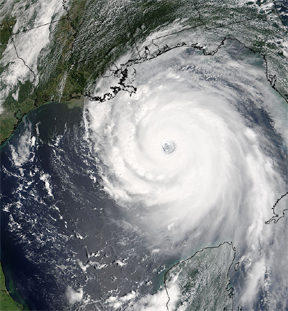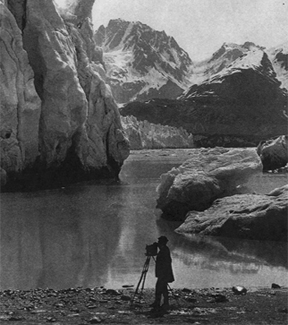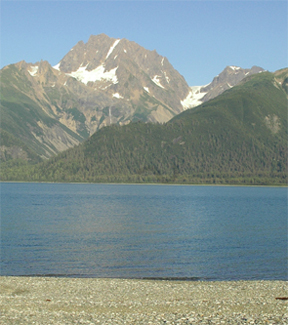
 The reach
of Hurricane Katrina expanded to the global climate change community almost
immediately after the storm made landfall in New Orleans. Various groups, from
climate researchers to environmentalists to policy-makers, hazarded the idea
that as atmospheric temperatures rise from increased greenhouse gases, large
hurricanes — such as Katrina and its successor Rita in the Gulf of Mexico
— would become more common.
The reach
of Hurricane Katrina expanded to the global climate change community almost
immediately after the storm made landfall in New Orleans. Various groups, from
climate researchers to environmentalists to policy-makers, hazarded the idea
that as atmospheric temperatures rise from increased greenhouse gases, large
hurricanes — such as Katrina and its successor Rita in the Gulf of Mexico
— would become more common.
Shortly before and after Hurricane Katrina hit the U.S. Gulf Coast in August,
two attention-grabbing papers were published that examined possible links between
hurricane activity and global climate change. The jury is still out on this
connection, as many factors affect storm frequency and intensity. Image courtesy
of NASA/MODIS Rapid Response Team at Goddard Space Flight Center.
But it’s not that simple. The claims centered around two papers, one published
the month before and one during the hurricane season’s spectacular climax.
Kerry Emanuel of MIT in the Aug. 4 Nature and Peter Webster of the Georgia
Institute of Technology and colleagues in the Sept. 16 Science independently
examined sea-surface-temperatures and came to the conclusion that they could
see climate change signals in large-storm intensity changes.
Emanuel looked at changes across the globe since 1930, finding a correlation
between changes in sea-surface temperatures, winds and major tropical storms
(hurricanes, typhoons or cyclones). Worldwide, a marked increase occurred in
the total energy released over the lifetime of major storms that could be classified
as Category-4 or larger hurricanes, but not in smaller storms, as global tropical
sea-surface temperatures rose. Webster’s team found more frequent intense
storms, but only using global satellite data from the past 30 years. The authors
of both papers noted that data have not been collected over enough time to make
a definite connection between storms and climate change — and that specific
events such as Hurricane Katrina cannot be attributed to global climate change.
Locally, storms have declined in the north Indian Ocean and eastern North Pacific,
Emanuel says, but these are specific regional responses, and global climate
change does not happen the same way everywhere.
The response to these authors’ observations was immediate and strong. Experts
from the National Oceanic and Atmospheric Administration and elsewhere cautioned
that drawing a direct link between climate change and hurricane behavior is
not yet possible, and that the El Niño-Southern Oscillation may have
more of an impact on storm intensity and occurrence. Hurricane experts pointed
to increasing hurricane activity and sizes that they say run on a 20- to 30-year
cycle, which led to a dearth of high-impact events in the North Atlantic during
the 1950s and 1960s. Emanuel says, however, that “the case for a cycle
of hurricane activity is very tenuous,” relying on landfall data in a specific
region that is even less reliable than the global climate data.
Looking at the literature, Roger Pielke Jr., director of the Center for Science
and Technology Policy Research at the University of Colorado in Boulder, wrote
in his blog Prometheus that “research has not been conducted that
would allow for a definitive conclusion on these different opinions on hurricanes
and global warming. And unless there are some surprises in the publication pipeline,
it does not look like there will be any peer-reviewed scientific studies available
by the end of 2005 … that clarify the issue of attribution of greenhouse
gas effects on hurricanes.” The only way to determine whether the link
between global climate change and large storms is real will be with time.
Naomi Lubick
Back to top
 |
 |
As melting in the Arctic seems to be accelerating, with ice conditions over
the past 30 years plummeting, both in extent and thickness, researchers are
making predictions that the Arctic Ocean will have ice-free summers before the
end of the century. The likelihood of avoiding such a loss, they say, becomes
smaller as other processes lock in conditions that will lead to more melting.
From 1891 (left) to 2005 (right), the terminus of the Muir Glacier in Alaska,
which had once filled the entire fjord, shifted 50 kilometers to the north,
leaving little ice left in the area — just one measure of climate change
in the Arctic. Photos courtesy of Archive at Glacier Bay National Park; Bruce
Molnia.
The extent of Arctic ice lost this year was the highest since 2002, according
to data released Sept. 28 by the National Snow and Ice
Data Center at the University of Colorado in Boulder, in cooperation with NASA
and the University of Washington in Seattle. And over the past few years, sea
ice — which generally reaches its lowest point in September — amounted
to 20 percent less than the average recorded between 1979 and 2000, the report
said.
Another group of researchers, led by Jonathan Overpeck, director of the Institute
for the Study of Planet Earth at the University of Arizona, Tucson, concluded
that the Arctic will be iceless for the first time in a million years. In Eos
on Aug. 23, they suggested that interactions between various factors (including
permanent ice, ocean circulation and anthropogenic greenhouse gases) will push
the planet’s ice systems outside the “natural envelope” of conditions
in an interglacial period. Once outside the envelope, a warm Arctic is even
less likely to recover its ice: The planet reflects less heat from the sun without
its normal polar ice cover, and thus Earth will warm even more as the Arctic
melts more.
Recently, a research group has attributed warming in the Arctic to a sudden
flood of warm water into the north polar ocean, as a byproduct of the North
Atlantic Oscillation. According to Igor Polyakov of the International Arctic
Research Center, at the University of Alaska in Fairbanks, and co-workers in
the Sept. 9 Geophysical Research Letters, this warm water influx could
further contribute to ice melt, as well as to atmospheric changes that also
would lead to further melting.
At the other end of the planet, researchers have logged both growth and shrinkage
in Antarctic glaciers. Increased snowfall in the interior may be contributing
to the East Antarctic ice sheet’s mass — which is increasing, according
to research published in Science on June 24, led by Curt Davis of the University
of Missouri in Columbia — potentially slowing sea-level rise. Measurements
of glaciers in the West Antarctic Peninsula region show they are flowing into
the ocean faster than snowfall can replenish them inland, according to Eric
Rignot of the Jet Propulsion Laboratory, in Pasadena, Calif., and co-authors
in the April 14 Geophysical Research Letters. If warming continues in
the region, they wrote, the melt will contribute to sea-level rise.
Naomi Lubick
Links:
"Greenhouse
gases revisited," Geotimes, Web Extra, Oct. 8, 2005.
 |
Geotimes Home | AGI Home | Information Services | Geoscience Education | Public Policy | Programs | Publications | Careers |